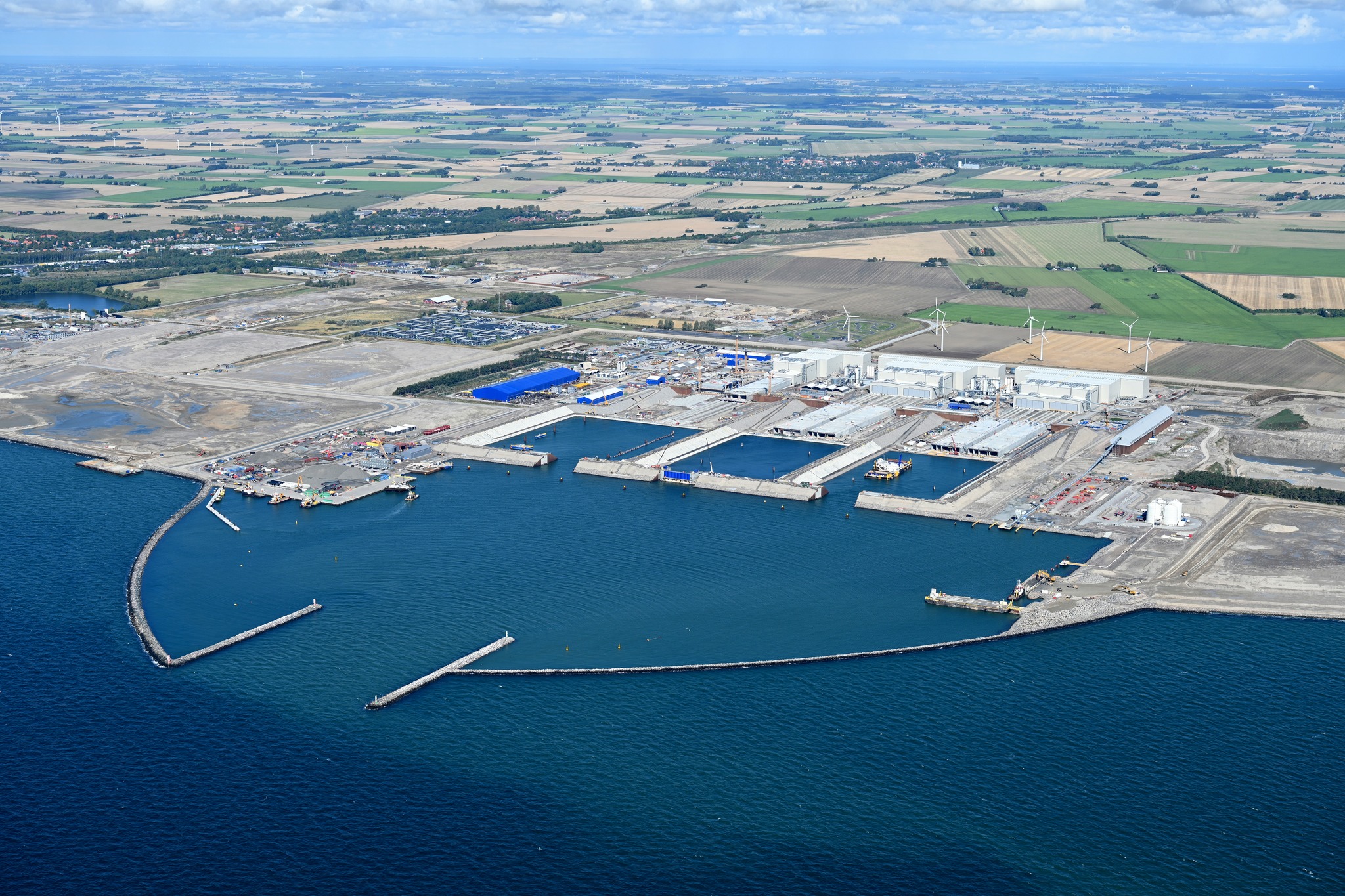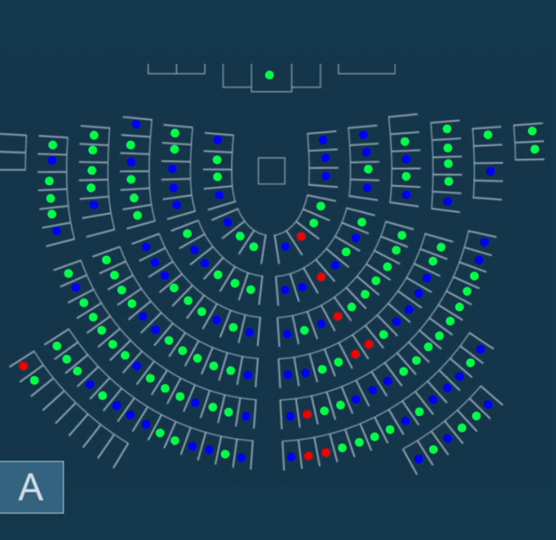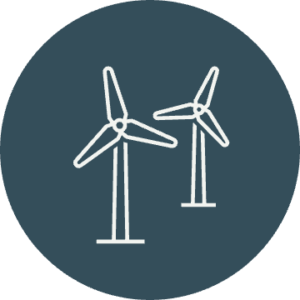
FEMERN PORT & INDUSTRIAL PARK
A VISION FOR THE FUTURE DEVELOPMENT OF AREAS NEXT TO THE FEMERN TUNNEL PRODUCTION FACILITY

Retention of the Production Facility
The Femern Port & Industrial Park represents a visionary initiative to repurpose the production facility in Rødbyhavn, originally established for the
Femern Tunnel project. Following the ratification of Law L57 on December 14, 2023, this facility will remain under state ownership, managed by Sund & Bælt, and is slated for repurposing into various governmental and non-governmental projects starting January 1, 2028.
Strategic Advantages of Retaining the Facility
- Business Potential: The facility is poised to support ancillary industries and future mega-projects, particularly those aligned with the green transition.
- Cost Efficiency: Preserving the existing infrastructure eliminates the need for new construction, resulting in substantial financial savings for future projects.
- Accelerated Timelines & Reduced Risk: Utilizing an established facility can shorten construction periods by 1-2 years and mitigate risks associated with new builds.
- Sustainability: Repurposing the facility reduces CO₂ emissions, minimizes noise and air pollution, conserves natural resources, and prevents the environmental impact of developing new land and sea areas.
- Retention of Expertise: Maintaining the facility ensures the preservation of local skills and knowledge developed during the Femern Tunnel project.
Future Ownership and Operational Model
The organizational structure and operational model for the production site are currently under development.
Sund & Bælt is engaging with potential operators to establish a management framework, with one proposed model involving offering a concession for operations or appointing an independent operator.
The Ministry of Transport will determine the final ownership and management structure based on coalition agreements.

- The facility is quite unique
- It has special capabilities
- It is designed for very specific projects
- The area will be preserved as it is

- The full area is very extensive
- It is split up in several ”chunks”
- Each sub-area will operate individually
- The full area operates across several sub-areas

- One section will be reserved for large Danish projects
- The rest will be for other private and public projects
- Possibly with a permanent section, such as a shipyard
Potential Projects and Activities for the area
The facility’s unique capabilities make it suitable for a range of future projects, pending parliamentary approval and tender processes. Potential uses include:
- State Mega-Infrastructure Projects: Such as the Eastern Ring Road in Copenhagen, the 3rd Limfjord Junction, and Baltic Sea tunnels.
- Offshore Wind Production: Supporting the manufacturing and deployment of offshore wind energy components.
- Wind Turbine Decommissioning or Repowering: Facilitating the sustainable management of aging wind energy infrastructure.
- Energy Islands: Contributing to innovative renewable energy projects.
Additionally, the facility’s dry docks can service up to 95% of Baltic Sea ships, addressing regional repair capacity shortages and supporting shipyard operations.

Eastern Ring Road
Copenhagen (11 km)

3rd Limfjord Junction

Baltic Sea Tunnels

Offshore Wind Production

Decommissioning or Repowering of Wind Turbines

Energy Islands
Potential Activities at the Current Production Area
As part of Lolland Municipality’s preparations for establishing the production area, preliminary studies included site visits and dialog meetings with industry
representatives, especially in the green transition and offshore wind sectors.
The findings indicate significant potential for the existing facility:
- Offshore Wind Projects
Capable of handling the production and shipping of entire offshore wind projects, including foundations. - Shipyards
The dry docks can service up to 95% of Baltic Sea ships, addressing the repair capacity shortage. - Dry Dock Size
Large dry docks can support state projects, shipyards, and floating wind turbine foundations, meeting significant European demand. - Production Halls
Suitable for manufacturing and coating large steel components for offshore wind projects and shipbuilding. - Transportation Links
Proximity to the E47 motorway and the EU-Scandinavia railway line ensures efficient logistics. - Renewable Energy Supply
Lolland boasts abundant renewable energy resources. - Green Transition Synergies
Potential synergies with planned Power-to-X (PtX) and Carbon Capture and Storage (CCS) projects. These findings underscore the unique advantages of the area for supporting industrial and green transition activities. - Adjacent Back Areas
Spacious areas offer unique development opportunities, unlike other harbors constrained by urban and natural surroundings.
Expansion & Future Industrial Development
The municipality of Lolland is committed to leveraging the region’s strategic advantages to drive significant economic growth and position the region as a leader in green transition.
Emphasizing the combined model’s potential for long-term business development and employment in Southern Zealand, the municipality is optimistic about the proposed operating models.
Plans are underway to expand the commercial area by approximately 776 hectares beyond the current construction site, accommodating potential new business operations such as:
- A shipyard for warship construction and repairs
- Production facilities for floating wind turbine foundations
- Manufacturing of tunnel elements
- Production of monopiles and transition pieces for offshore wind
- A large wind turbine blade factory
- Wind turbine tower manufacturing
- Nacelle production
- Wind turbine blade repair
- Decommissioning and recycling of old wind turbines
- Supporting transport and logistics industries
The transformation of the Rødbyhavn production facility into the Femern Port & Industrial Park offers a strategic asset for both public and private sector investments.
Its preservation aligns with sustainable development goals and positions the region as a hub for future infrastructure and green transition projects.
Facts
- World’s largest tunnel factory
- Stands on 150 ha. of land that includes the manufacturing facility, dry docks, port, storage and worker village
- Main element factory consists of three buildings on 14 ha. of land
- Ceiling height clearance of 30 meters
- Three dry docks with potential to remove separation walls to create one or two larger dry docks
- Dry dock basins are 100×600 meters, with a depth of approx. 11 meters
- Harbor basin protected by two breakwaters with a 150-meter entrance
- Entrance to harbor basin with depth level of 8,70 – 10,30 meters
- Worker village currently accommodates 1350 expatriate workers
- 750-1000 ha. of land surrounding the Femern element factory and port is potentially available for further development
We invite investors and business owners to collaborate with us during the pre-design phase of the future Femern Port & Industrial Park.
Let’s give you a call
Type in your name and phone number and we will give you a call within 48 hours during business days.